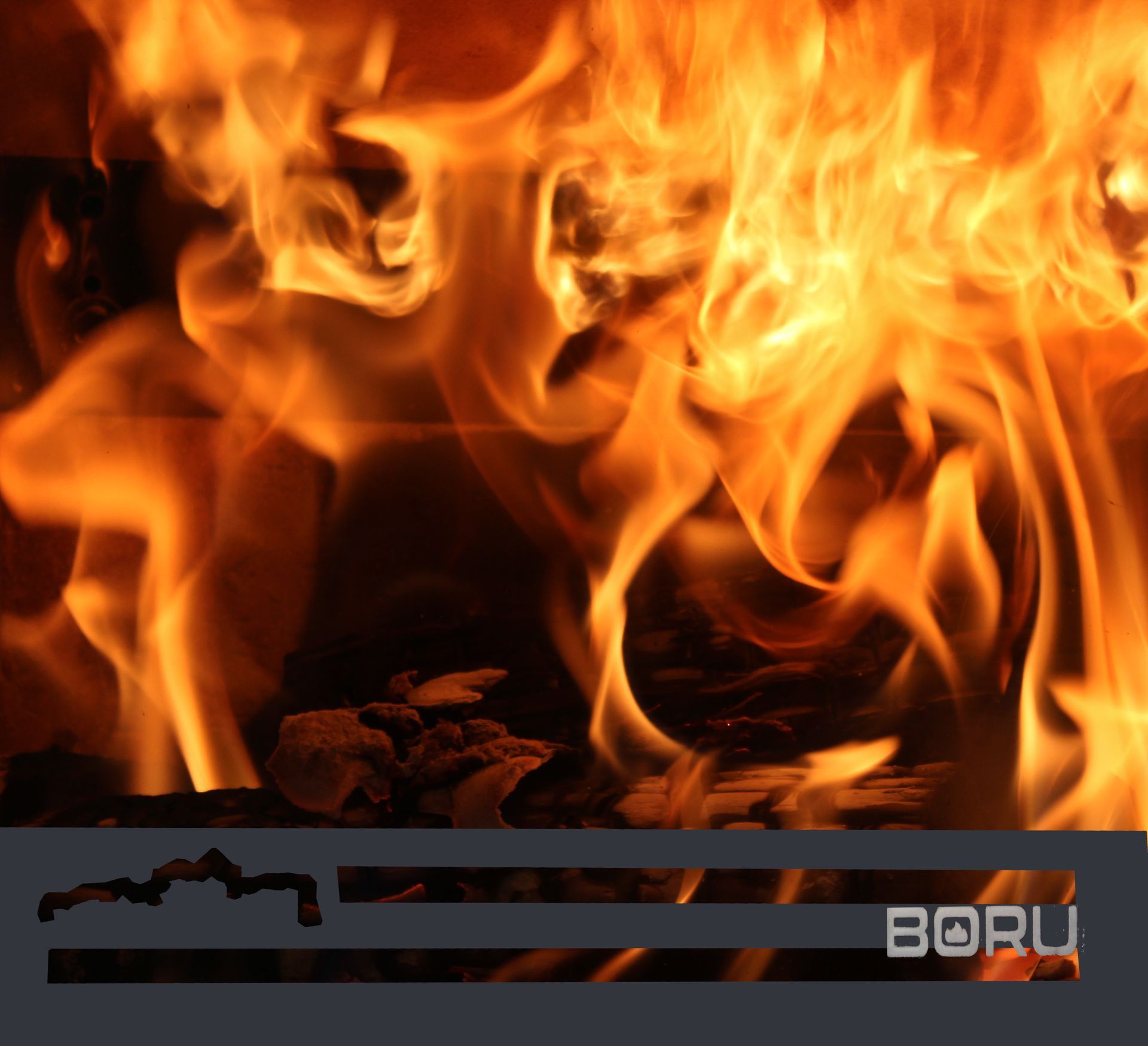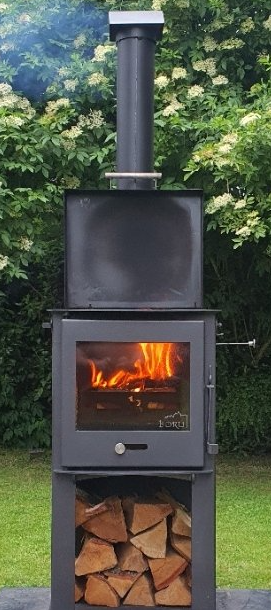What Is an Inset Stove?

Inset stoves have gained increasing popularity in recent years as homeowners seek efficient and stylish heating solutions. If you're looking to enhance the warmth and aesthetics of your home, an inset stove might be the perfect addition. In this comprehensive guide, we'll delve into the world of inset stoves, helping you understand what they are, their various types, benefits, safety considerations, regulations, and how to choose the right one for your home.
Understanding Inset Stoves
An inset stove, also known as an insert or built-in stove, is a heating appliance designed to be installed into a recessed wall or fireplace opening. Unlike freestanding stoves, which sit in the middle of a room, inset stoves fit seamlessly into your home's architecture, providing a cozy and efficient source of heat.
History and Evolution of Inset Stoves
Inset stoves have a rich history dating back to early heating solutions. In the past, they were primarily used for cooking and heating, often as central fixtures in homes. As technology advanced, these stoves evolved to become more efficient and aesthetically pleasing, making them a popular choice for modern homes.
Types of Inset Stoves
Wood-Burning Inset Stoves
Wood-burning inset stoves offer a timeless appeal, combining the charm of a traditional open fireplace with improved efficiency. They provide radiant heat, creating a warm and inviting atmosphere. While they require a steady supply of firewood, they are a sustainable heating option.
Multi-Fuel Inset Stoves
Multi-fuel inset stoves are versatile, allowing you to burn a variety of fuels, including wood, coal, and even peat. This flexibility ensures you can choose the most cost-effective and readily available fuel source while enjoying the benefits of efficient heating.
Gas Inset Stoves
Gas inset stoves offer the convenience of clean and controllable heat. They are easy to use, providing instant warmth at the flick of a switch or turn of a knob. However, it's essential to consider ventilation and safety when installing a gas inset stove.
Electric Inset Stoves
Electric inset stoves are known for their energy efficiency and ease of installation. They often come with realistic flame effects, providing the ambiance of a traditional fire without the need for a chimney or venting. Their plug-and-play nature makes them accessible for various home setups.
Benefits of Using an Inset Stove
Improved Heating Efficiency
Inset stoves excel in distributing heat evenly throughout your home. By utilizing the existing chimney or venting, they capture and circulate warm air effectively, making them an energy-efficient choice.
Aesthetics and Interior Design
One of the significant advantages of inset stoves is their seamless integration into your home's decor. They come in various designs and finishes, allowing you to choose a model that complements your interior style. Viewing windows provide a captivating focal point in any room.
Environmental Considerations
Some inset stoves, especially wood-burning models, offer eco-friendly heating options. They produce lower emissions and use sustainable fuel sources, reducing their environmental impact.
Cost-Effectiveness
While the initial cost of purchasing and installing an inset stove can be an investment, it pays off in the long run. Reduced fuel consumption and increased energy efficiency lead to savings on heating bills over time.
Installation and Maintenance
Professional Installation vs. DIY
Installing an inset stove involves complex tasks like ensuring proper ventilation, fitting flue systems, and adhering to safety codes. While some experienced DIY enthusiasts might tackle this, it's generally recommended to hire qualified professionals for a safe and compliant installation.
Maintenance Tips
To ensure your inset stove functions optimally and safely, regular cleaning and servicing are essential. Routine inspections and cleaning of vents, flues, and glass doors can prevent issues and extend the stove's lifespan.
Safety Considerations
Proper Ventilation and Flue Systems
Adequate ventilation and a well-designed flue system are crucial for the safe operation of an inset stove. These components ensure the removal of combustion byproducts like carbon monoxide and maintain indoor air quality.
Carbon Monoxide Risks
Carbon monoxide (CO) is a colorless, odorless gas that can be produced by fuel-burning appliances, including inset stoves. Proper maintenance and the installation of CO detectors are essential to mitigate this risk.
Child Safety and Precautions
If you have children in your home, take extra precautions to ensure their safety around the inset stove. Installing safety gates, using stove guards, and educating children about the dangers of hot surfaces are essential steps.
Fire Safety Measures
In addition to preventing burns, it's crucial to have fire extinguishing equipment readily available. Regularly inspect and maintain your inset stove, chimney, and surrounding areas to reduce the risk of fires.
Inset Stove Regulations and Codes
Building Codes and Permits
Before installing an inset stove, research local building codes and obtain any necessary permits. Compliance with regulations ensures the safety of your installation and prevents potential legal issues.
Environmental Regulations
Some areas have specific regulations regarding the type of inset stoves allowed due to environmental concerns. Ensure that your chosen stove meets any emissions standards or restrictions in your region.
Safety Standards and Certifications
Look for inset stoves that have been certified by recognized safety organizations. These certifications indicate that the stove has been tested and meets safety and performance standards.
Choosing the Right Inset Stove for Your Home
Sizing and Heating Requirements
Consider the size of the room you intend to heat and the stove's heating capacity. Choosing the right size ensures efficient heating without overloading or underutilizing the stove.
Fuel Type Considerations
Select a fuel type that aligns with your heating needs, accessibility to fuel sources, and environmental preferences. Carefully weigh the pros and cons of wood, multi-fuel, gas, or electric options.
Design and Aesthetic Preferences
Your inset stove should complement your home's interior design. Explore various styles, finishes, and viewing window options to find a stove that enhances your decor.
Budget Considerations
Determine your budget, factoring in not only the stove's initial cost but also installation expenses and long-term operating costs. Consider the potential energy savings when evaluating the overall value.
Inset Stove Brands and Models
Notable Manufacturers and Their Offerings
Research reputable inset stove manufacturers such as Dovre, Stovax, and Charnwood. Explore their product ranges to find models that match your requirements.
Customer Reviews and Ratings
Reading customer reviews and ratings can provide valuable insights into the performance and durability of specific inset stove models. Real-world experiences can help you make an informed decision.
Features and Innovations to Look For
Modern inset stoves often come with advanced features like remote control, programmable thermostats, and eco-mode settings. Assess these features to determine which ones align with your heating preferences.
Conclusion
Inset stoves offer a blend of functionality, aesthetics, and efficiency that make them an attractive heating solution for today's homes. Whether you opt for a wood-burning, multi-fuel, gas, or electric model, the key is to prioritize safety, compliance with regulations, and personal preferences. By understanding the various types, benefits, and considerations associated with inset stoves, you can make an informed decision and transform your living space into a warm and inviting haven. As you embark on your journey to select the perfect inset stove, remember that this investment not only enhances your home's comfort but also contributes to its overall charm and value.









